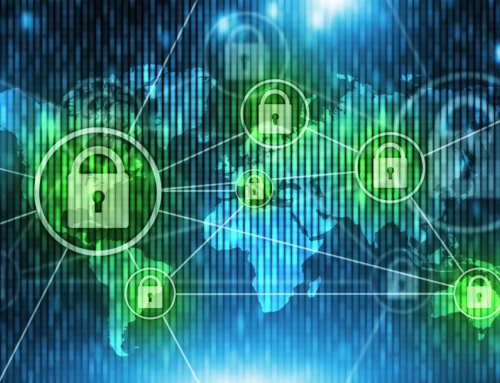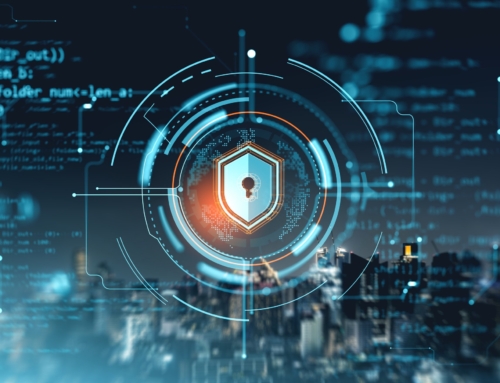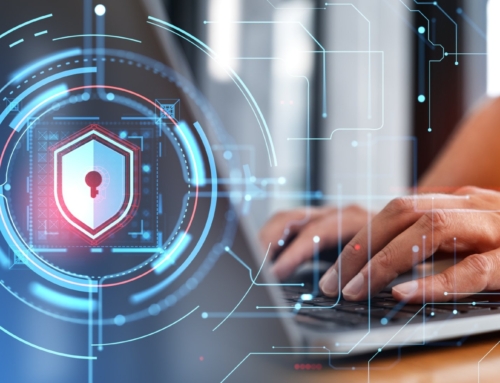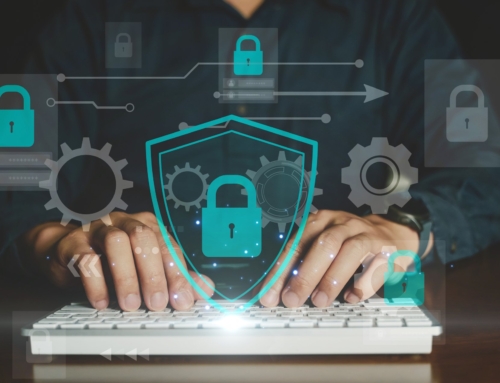Documenting Your Ransomware Response
Understanding the Threat: The Importance of Ransomware Response Documentation
Ransomware response documentation is a vital element of any organization’s cybersecurity arsenal. With ransomware attacks occurring with alarming regularity, the severity of these incidents cannot be underestimated. Such attacks not only disrupt business operations but can also have a long-lasting impact on an organization’s financial health and reputation. It is imperative, therefore, that we maintain meticulous documentation as part of our comprehensive ransomware response plan to ensure rapid recovery and minimal disruption.
Crafting a Proactive Approach: Initiating Your Ransomware Response Documentation
We acknowledge the importance of being proactive in the fight against ransomware. It is not a question of if, but when an attack will occur. Preparing for a ransomware incident involves a series of pre-emptive measures that fortify an organization’s defenses against such threats. Within these measures lies the creation and maintenance of ransomware response documentation. This documentation serves as a blueprint for our cybersecurity teams, providing clear instructions on how to react in the event of an attack, thereby reducing response times and mitigating risks.
The First Line of Defense: What to Include in Ransomware Response Documentation
A robust ransomware response documentation should be comprehensive yet concise. It ought to include an assessment of the organization’s current cybersecurity posture, clearly defined roles and responsibilities for team members during an incident, detailed response procedures, and communication plans for both internal and external stakeholders. It should also contain contact information for critical personnel and external support resources. Equally important is the inclusion of an IT recovery plan that outlines the step-by-step process to restore systems and data to normal operations. Understanding that clarity and accessibility of this documentation are pivotal ensures that when an attack does occur, we are ready to act swiftly and efficiently.
Setting the Stage: Building Your Ransomware Response Plan
Comprehensive Analysis: Understanding Your Digital Landscape
As we embark on developing an ironclad ransomware response plan, it’s crucial that we begin with a thorough analysis of our current digital environment. We scrutinize every layer of our network infrastructure to identify vulnerable points and, consequently, shield them from potential threats. This meticulous assessment forms the bedrock upon which our ransomware response documentation rests.
Policy Formulation: Crafting Clear Guidelines
Armed with knowledge of our network’s intricacies, we craft well-defined policies that govern our approach to ransomware threats. These policies detail not only the measures for prevention but also the steps to be followed in the wake of an incident. Each policy is carefully recorded to ensure clarity and consistency, providing a stable foundation for our ransomware response documentation.
Response Team Formation: Assigning Roles and Responsibilities
Creating a dedicated response team is essential. We assign specific roles and responsibilities that play to the strengths of our team members. This strategic allocation of duties ensures swift and efficient action when seconds count. The clearly defined responsibilities of each team member are delineated in our ransomware response documentation, ensuring no time is wasted during an actual ransomware attack.
Training and Awareness: Equipping Our Team
With our response team at the ready, we prioritize regular training and awareness programs. We ensure that every team member not only understands their role but is also adept at executing the necessary tasks under pressure. These training sessions, and the materials used, are meticulously documented, enhancing the overall robustness of our ransomware response documentation.
Incident Response Drills: Testing the Plan
Regularly scheduled incident response drills act as both a test and a reinforcement of our ransomware readiness. These simulations help us identify any weaknesses in our plan, allowing us to iterate and refine. We thoroughly document each drill’s outcomes and improvements made, thus contributing valuable insights to our ransomware response documentation.
Continual Improvement: Learning and Adapting
Finally, we embrace a culture of continual improvement. As ransomware tactics evolve, so too must our defenses. We consistently review and update our response plans and documentation, drawing wisdom from industry developments and past experiences to stay ahead of potential threats.
- Inventory of assets and systems for quick reference
- Clear communication protocols for internal and external stakeholders
- Detailed recovery processes and data backup procedures
- Contact lists for critical response team members and external support
Did you know? Proper ransomware response documentation can significantly reduce downtime by providing critical information for a swift recovery, potentially saving organizations millions in losses.
Strengthening Cybersecurity with Effective Ransomware Response Plans
In the complex landscape of cybersecurity threats, putting in place robust defensive and reactive measures is indispensable. At Alvaka, we understand the value of ransomware response documentation in fortifying your organization’s resilience against cyber extortion. It is not merely a bureaucratic step; it’s a lifeline in the throes of an IT crisis. Compiling and maintaining comprehensive documentation is akin to building a fortress within the digital realm, providing a structured path to follow when every second matters.
Essential Steps for Ransomware Crisis Management
We stand with you, recognizing that the aftermath of an attack is as crucial as its prevention. After an unfortunate incident, your first recourse will be the ransomware response documentation, a testament to thorough preparation and foresight. It provides a clear trail to assess what transpired, why it happened, and how responses were executed. Post-incident analysis leads to a stronger, more informed cyber-defense strategy, transforming past vulnerabilities into future safeguards.
Dedication to Enhanced Cybersecurity Protocols
As your ally in IT management, our role extends beyond immediate recovery efforts. Leveraging our experience, we strive to transform your ransomware response documentation into a dynamic tool that evolves with emerging threats. It is a component of our broader commitment to securing your digital operations against the evolving tactics of cybercriminals. By refining this documentation, we ensure that it remains relevant, ensuring that your team is always one step ahead in the constant cyber arms race.
Ransomware response documentation is the bridge between an unpredictable present and a secure future. It is the embodiment of lessons learned and the blueprint for ransomware recovery. Alvaka is dedicated to empowering your organization to stand resilient in the face of adversity, with solid documentation practices at the heart of our strategy. Let us navigate these treacherous waters together, with the anticipation of calm seas through our concerted efforts in IT management and network services.
FAQ
What are the common indicators of a ransomware attack? ▼
Upon detecting suspicious activity that could signify a ransomware attack, we take immediate notice of specific indicators. These signs include the presence of ransom notes on our systems, unusual file extensions, and inaccessible data. These symptoms prompt us to launch our documented response procedures forthwith, ensuring a seamless transition into containment and remediation efforts.
Why is ransomware response documentation crucial in IT management? ▼
Ransomware response documentation serves as the backbone of our preparedness measures in the event of an attack. It outlines our planned strategies, roles and responsibilities, and recovery processes. This essential documentation provides guidance, enabling us to manage the incident effectively and minimize potential damage, which is paramount given the gravity of ransomware threats today.
What are the proactive measures we can take against ransomware threats? ▼
To proactively counteract ransomware threats, we undertake several critical measures. These include regular data backups, staff training on security awareness, implementing robust security systems, and testing our incident response plan. These preemptive strategies are documented meticulously, ensuring that each step we take is informed and intentional.
What should our ransomware response documentation include? ▼
Our ransomware response documentation is comprehensive, encompassing contact lists for our response team, detailed communication plans, step-by-step remediation procedures, and legal considerations. Additionally, it integrates our data backup plans and business continuity strategies. Each element is essential for mounting a decisive response to ransomware incidents.
How often should we update our ransomware response documentation? ▼
Regular updates to our ransomware response documentation are vital given the evolving nature of cybersecurity threats. We aim to review and refine our documents at least bi-annually or following significant changes in our network architecture, IT systems, or staff roles to maintain relevance and effectiveness.
What is the importance of clear and accessible ransomware response documentation? ▼
Clarity and accessibility are the pillars of our ransomware response documentation. They ensure that when an incident occurs, all team members can promptly and precisely follow the documented procedures. This clear guidance is indispensable for a swift and coordinated response under the pressures of a live ransomware attack.
In the event of a ransomware attack, how do we initiate our response? ▼
When faced with a ransomware attack, our immediate action is to refer to our ransomware response documentation. We initiate our response by assembling our incident response team, isolating infected systems, and executing our communication plan. This swift action mitigates the risk of further spread and sets the stage for containment and recovery.
Can our ransomware response documentation help in post-incident reviews?▼
Absolutely, our ransomware response documentation doesn’t only guide us through an active crisis. After managing the incident, our documentation provides a framework for conducting thorough post-incident reviews. Through these reviews, we identify the attack’s root causes, evaluate our response’s effectiveness, and refine our protocols to strengthen future defenses.
How does ransomware response documentation aid in compliance and legal matters? ▼
Our response documentation plays a pivotal role in addressing compliance and legal matters. It records the steps taken during an incident, aiding in demonstrating due diligence and adherence to legal and regulatory requirements. This documentation can be instrumental in any legal defense or audit, showcasing our commitment to maintaining rigorous cybersecurity standards.
How does our ransomware response plan integrate with our overall cybersecurity strategy? ▼
Our ransomware response plan is a critical component of our broader cybersecurity strategy, dovetailing with our preventive measures and overarching security policies. It’s crafted to be dynamic and adaptable, permitting seamless integration with other security initiatives. This approach ensures a uniform and effective defense against the multifaceted threats we face.








 Smoke testing is a term used to describe the testing process for servers after patches are applied.
Smoke testing is a term used to describe the testing process for servers after patches are applied.  This is a basic cost calculator for you to compute your typical monthly cost for patching your servers, PCs, laptops, tablets and associated application software. It also forms the basis for you to begin calculating your Return on Investment for software patching, or for comparison with alternatives to the manual process of patching operating systems and application software—such as Patch Management as a Service, also known as Vulnerability Management as a Service.
This is a basic cost calculator for you to compute your typical monthly cost for patching your servers, PCs, laptops, tablets and associated application software. It also forms the basis for you to begin calculating your Return on Investment for software patching, or for comparison with alternatives to the manual process of patching operating systems and application software—such as Patch Management as a Service, also known as Vulnerability Management as a Service.